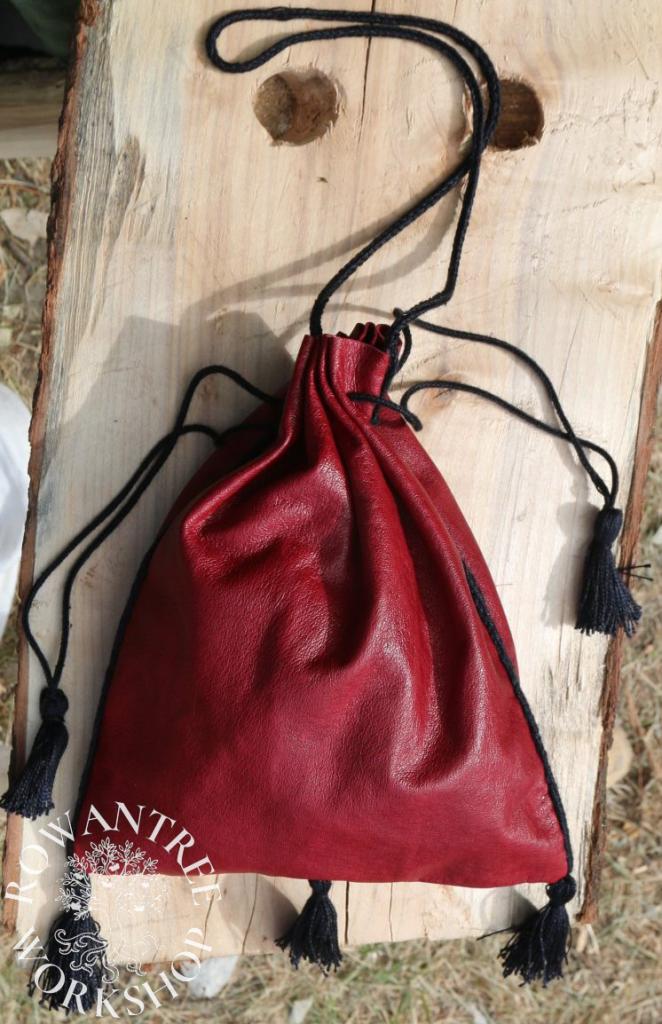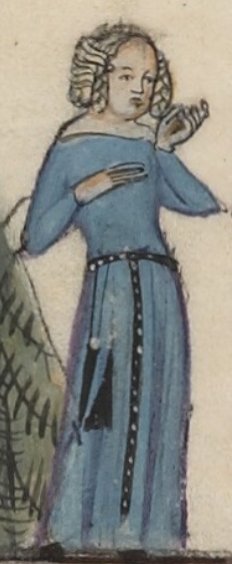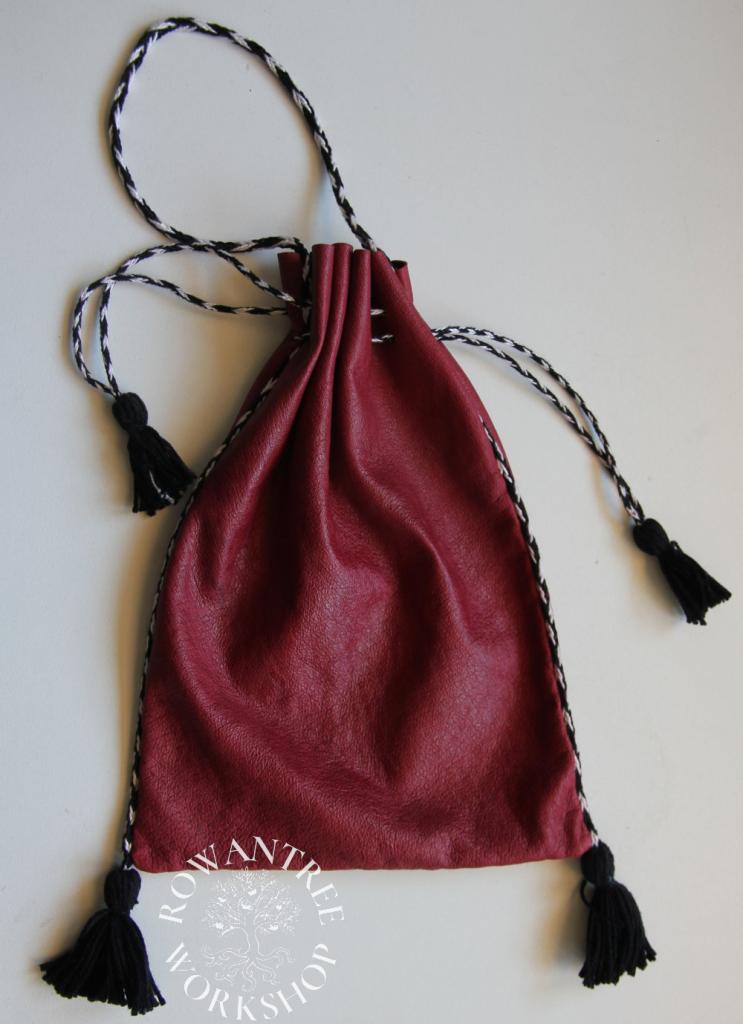A typical 14th century woman’s purse, made in red leather with silk drawstrings.
This project was part of a skills swap with my friend Miriam: she tablet-wove me a belt in black silk, and I made her a leather purse for her 14th century outfit.

The typical purse for a woman in the 14th century was a simple drawstring purse, hung from the belt by a separate handing cord. In fact, this same design can be seen worn by in most Eastern European countries from 12th – 15th century, and even into the 16th century in the form of sweete bags.
Many of the surviving purses are made of rich textiles, or are heavily decorated with embroidery, but images of ordinary women show plain purses, which might be textile or leather.
Design
The general form of the purse can be seen in countless paintings and sculptures. These examples from the England and France show the typical decoration of two or three tassels along the bottom edge. The size of drawstring purses in both art and archaeology vary from small to substantial – these are all of a useful size.



The drawstring length is also important – these examples show the typical upper thigh position, well above the knee.
We cannot tell from the images whether these purses were made from textile or leather. The green example is most likely textile, since leather in period was commonly left brown, or dyed black, although coloured leather was used for making points (laces). Miriam asked for a purse in red leather.
In Dress Accessories, Egan & Pritchard (1991) details two basic methods of constructing leather purses. One option is to lay the leather right sides out and join the edge by enclosing them in a silk tablet-woven edge. The other is to sew the pieces inside out, and then turn the purse, so the seam is inside. These approaches are also seen other countries and in purses made of textile (eg Purses in Pieces Goubitz 2007).
Holes for drawstrings in leather pouches are made as simple holes or slits, with no reinforcing. There is no evidence of lining in these leather purses (this would show as row of edge/flesh stitches along the mouth of the purse). To make the two drawstrings work, you must have an even number of holes on each side (eg 6 or 8). The holes on the end are a half space from the side seam.
Construction
I decided on a simple approach, in line with the extant examples. I cut a 18 x 21cm rectangle of fine deerskin, dyed it red using commercial dyes and polished it. I sewed a grain/grain seam along each side of the purse in waxed linen thread using double running stitch, then turned it right side out.
Using a fine chisel, I cut two rows of 8 slots along the top for the drawstrings (this seems to be the most common number, although examples exist with 6 and 10 holes).
Next I made a hanging cord in heavy black silk – a round fingerloop braid of 5 bowes. I sewed this to the edge of the purse on each side, leaving a 45cm loop at the top. I tied off the cord at the base of the purse to make a tassel, and sewed a matching tassel in the middle of the base.
I made a pair of drawstrings in unwaxed silk, using the same fingerloop technique. I threaded these through the holes, tied together the loose ends to make tassels.


Afterthoughts
After some use, the black silk hanging cord became frayed – the silk was too soft. I worked a replacement cord using waxed silk, which has stood up much better to wear.
The following year, I made a similar purse for another friend, this one with a bi-coloured hanging cord and drawstrings, and two tassels.

